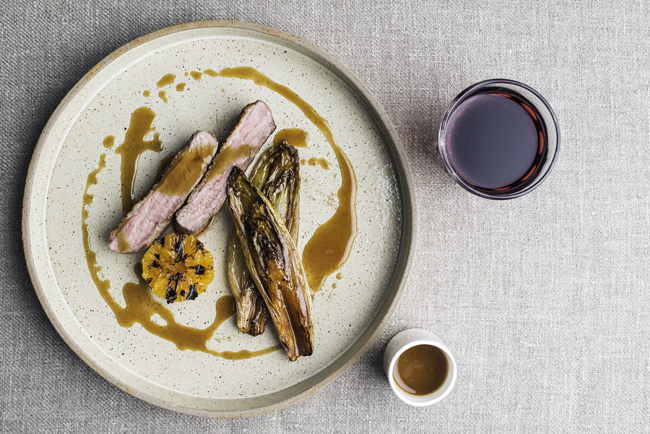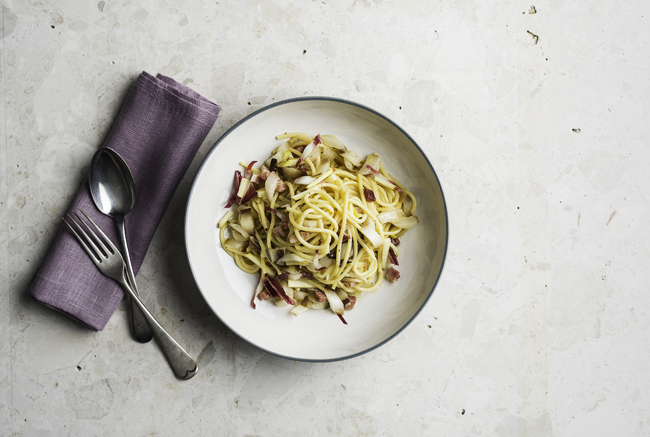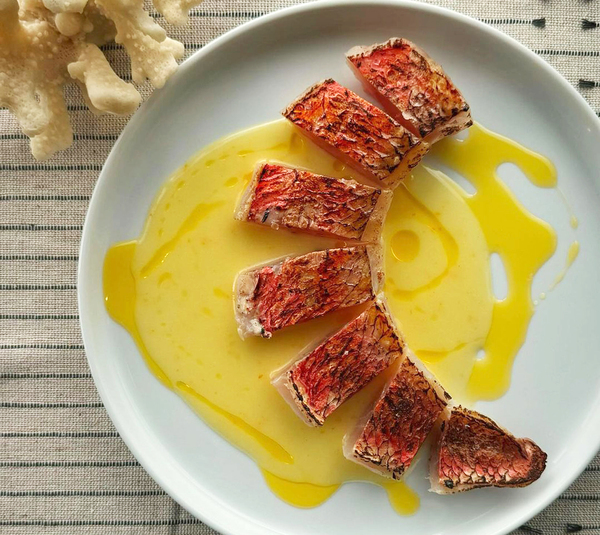Home-grown harvest: Chicory
A chef's craft is all about balancing flavours, and the bitterness of chicory can play a part in a well-rounded recipe, says Russell Brown.
Combine the genetics with a general move towards sweeter food and it makes vegetables and leaves that fall into the bitter spectrum a tough sell. Many plant breeders and growers are breeding out bitter flavours in food â" the prevalence of the pink grapefruit as opposed to yellow is a case in point. On the other hand, where drinks are concerned, we actively seek out bitter tastes, and double-hopped IPAs, coffee and cocktails such as the Negroni are all hugely popular.
Generally, this aversion to bitter foods is an Anglo-Saxon trait. In Italy especially, bitter flavours are an intrinsic and popular part of the cuisine. Think aperitifs, a radicchio salad with walnuts, roast duck with cime di rapa, a bergamot pudding or a double espresso.
Forcing and blanching are two growing techniques that have evolved to reduce the bitterness in plants. Dandelion, for example, is often blanched by covering it with terracotta pots on a small scale or black polythene on a commercial basis. Rhubarb and chicory â" also known as witloof or endive â" are forced, which is somewhat different. For chicory, the plant is field-grown initially and forms a parsnip-like root with a very leafy top. The roots are lifted and the tops trimmed before moving to cold storage. Once this cycle is complete, the roots are moved to forcing sheds where the warmer temperature starts the new shoot, known as a chicon, growing. As with rhubarb, this is done in near darkness to prevent the head colouring and developing those bitter flavours. It takes around 21 days for the heads to reach a harvestable size, and for wholesale they are often wrapped in blue paper to block out the light.
The main UK grower is a company called DGM Growers in Lincolnshire and its produce is available from a number of UK supermarkets and wholesalers. The crop is available all year round, but it has particular relevance to the chef in winter when few other British leaves are available. The main season is considered to be November to April.
Balancing flavours is all part of the chefâs craft, and bitterness plays a hugely important part in the success of a dish. It often cleanses the palate and balances both sweetness and richness. Chicory is certainly versatile and it can be cooked or can be served raw. Thinly sliced it can be cooked down into a marmalade; it can also be braised or caramelised and it cooks well sous vide. Josh Eggleton, chef-proprietor at the Pony & Trap in Chew Magna, Bristol, uses soy sauce and orange juice to braise chicory, and José Pizarro in London pairs chicory with breaded goatsâ cheese and clementines in a winter salad. Matt Budden, executive chef at Schpoons & Forx in Bournemouth, serves a salad of duck confit with both red and white chicory, watercress, Roquefort and a mustard dressing.
Buying and storage tips
- The key thing with chicory is to keep it refrigerated and in the dark.
- Heads should be firm and crisp.
- Avoid heads that are turning green or brown.
Market report
Italy, Holland and Belgium are the biggest suppliers of chicory, and it is available all year round. Dutch chicory is the most popular as it is better value for money; Belgian chicory is higher in quality but is a lot smaller and usually more expensive.
Yellow chicory is always cheaper than red as there is a lot more yellow leaf around. Chefs should look to pay around £2-£2.50 per kilo for yellow; the price of red, on the other hand, can change on a daily basis. For example, in the middle of December red chicory costs around £3.60 per kilo, but in January it can reach up to £10.30 a kilo.
Ashley Clemence, Total Produce
totalproducelocal.co.uk
Roast breast of duck with caramelised chicory and charred clementines
Serves 6
For the sauce
2 banana shallots, finely sliced
1 clove garlic, crushed
50ml olive oil
200ml cider
100ml orange juice
4 sprigs thyme
1 litre duck or chicken stock
Cornflour, to thicken
For the chicory
6 chicory, halved and core cut away
2tbs honey
200ml chicken stock
50g butter
Lemon juice, to taste
Maldon sea salt and freshly ground black pepper
For the duck
6 duck breasts
Maldon sea salt
To serve
3 clementines, skin removed, halved and charred on the cut surface
Start by making the sauce. Sweat off the shallots and garlic in the olive oil until tender and then increase the heat to caramelise lightly. Add the cider, orange juice and thyme and reduce to a syrup. Add the stock and reduce by around three-quarters. Taste and adjust the seasoning. Thicken with the cornflour to give a light sauce consistency. Pass into a clean pan, pushing down well on the solids.
Drizzle the cut surface of the chicory with the honey and season well. Place it cut-side down into a hot, dry non-stick pan to caramelise the surface. Add the stock and butter along with a squeeze of lemon juice, turn the chicory over and baste well. Cover with parchment or a butter paper and transfer to a 180°C oven and cook for six to eight minutes, basting occasionally.
Score the duck skin in a diamond pattern without cutting into the flesh. Season the skin with Maldon salt and place skin-side down in a medium-hot pan. Cook until the skin begins to colour and the fat starts to render. Season the flesh side and turn over, cook for one minute to seal the meat and flatten out the breast. Return to the skin side and drain any excess fat. Cook until the skin is golden and beginning to crisp. Transfer to the oven for three to four minutes until done. Remove to rest skin-side up.
To serve, slice the duck breasts lengthwise and place on the plate cut-side up. Lay the chicory piece to one side and the charred clementine to the other. Drizzle over a little sauce to finish.
Spaghetti with chicory, apple and pancetta
Serves 4
400g good-quality, dried spaghetti
Maldon sea salt and freshly ground black pepper
150g pancetta lardons
1 clove garlic, finely sliced
200ml vegetable stock
1 large crisp apple, peeled and cut into small batons
1 head of red chicory, finely sliced
Lemon juice, to taste
50g Parmesan, finely grated, plus extra to serve
Bring a large pan of water to the boil, add salt and then cook the pasta for eight to 10 minutes until it is al dente.
In the meantime, cook the pancetta lardons in a heavy sauté pan until golden and the fat has rendered. Add the garlic and cook for a further minute. Add the stock and allow to reduce by half. Once cooked, add the lightly drained pasta, making sure to reserve the cooking water. Toss the pasta with the sauce and allow to cook together for one minute. Add the apple and chicory and cook until the chicory is just wilted. Adjust the seasoning and add lemon juice to taste. Remove from the heat and stir in the 50g of Parmesan with a little of the pasta cooking water to create a creamy sauce.
Divide between bowls and serve with extra grated Parmesan.

















